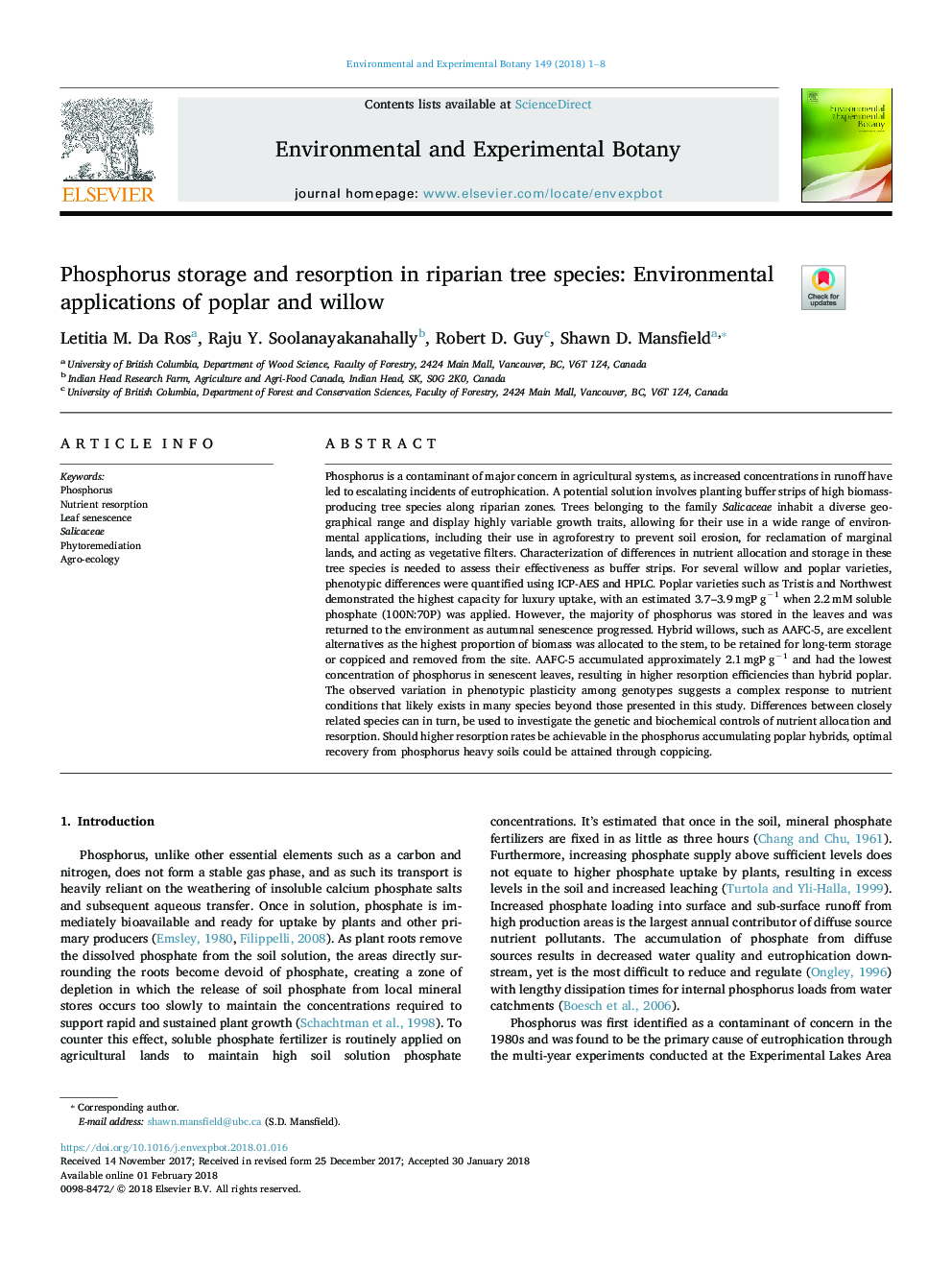| کد مقاله | کد نشریه | سال انتشار | مقاله انگلیسی | نسخه تمام متن |
|---|---|---|---|---|
| 8887029 | 1628028 | 2018 | 8 صفحه PDF | دانلود رایگان |
عنوان انگلیسی مقاله ISI
Phosphorus storage and resorption in riparian tree species: Environmental applications of poplar and willow
ترجمه فارسی عنوان
ذخیره و تخریب فسفر در گونه های درختی رودخانه: کاربرد محیط زیست صنوبر و
دانلود مقاله + سفارش ترجمه
دانلود مقاله ISI انگلیسی
رایگان برای ایرانیان
کلمات کلیدی
موضوعات مرتبط
علوم زیستی و بیوفناوری
علوم کشاورزی و بیولوژیک
بوم شناسی، تکامل، رفتار و سامانه شناسی
چکیده انگلیسی
Phosphorus is a contaminant of major concern in agricultural systems, as increased concentrations in runoff have led to escalating incidents of eutrophication. A potential solution involves planting buffer strips of high biomass-producing tree species along riparian zones. Trees belonging to the family Salicaceae inhabit a diverse geographical range and display highly variable growth traits, allowing for their use in a wide range of environmental applications, including their use in agroforestry to prevent soil erosion, for reclamation of marginal lands, and acting as vegetative filters. Characterization of differences in nutrient allocation and storage in these tree species is needed to assess their effectiveness as buffer strips. For several willow and poplar varieties, phenotypic differences were quantified using ICP-AES and HPLC. Poplar varieties such as Tristis and Northwest demonstrated the highest capacity for luxury uptake, with an estimated 3.7-3.9â¯mgPâ¯gâ1 when 2.2â¯mM soluble phosphate (100N:70P) was applied. However, the majority of phosphorus was stored in the leaves and was returned to the environment as autumnal senescence progressed. Hybrid willows, such as AAFC-5, are excellent alternatives as the highest proportion of biomass was allocated to the stem, to be retained for long-term storage or coppiced and removed from the site. AAFC-5 accumulated approximately 2.1â¯mgPâ¯gâ1 and had the lowest concentration of phosphorus in senescent leaves, resulting in higher resorption efficiencies than hybrid poplar. The observed variation in phenotypic plasticity among genotypes suggests a complex response to nutrient conditions that likely exists in many species beyond those presented in this study. Differences between closely related species can in turn, be used to investigate the genetic and biochemical controls of nutrient allocation and resorption. Should higher resorption rates be achievable in the phosphorus accumulating poplar hybrids, optimal recovery from phosphorus heavy soils could be attained through coppicing.
ناشر
Database: Elsevier - ScienceDirect (ساینس دایرکت)
Journal: Environmental and Experimental Botany - Volume 149, May 2018, Pages 1-8
Journal: Environmental and Experimental Botany - Volume 149, May 2018, Pages 1-8
نویسندگان
Letitia M. Da Ros, Raju Y. Soolanayakanahally, Robert D. Guy, Shawn D. Mansfield,
